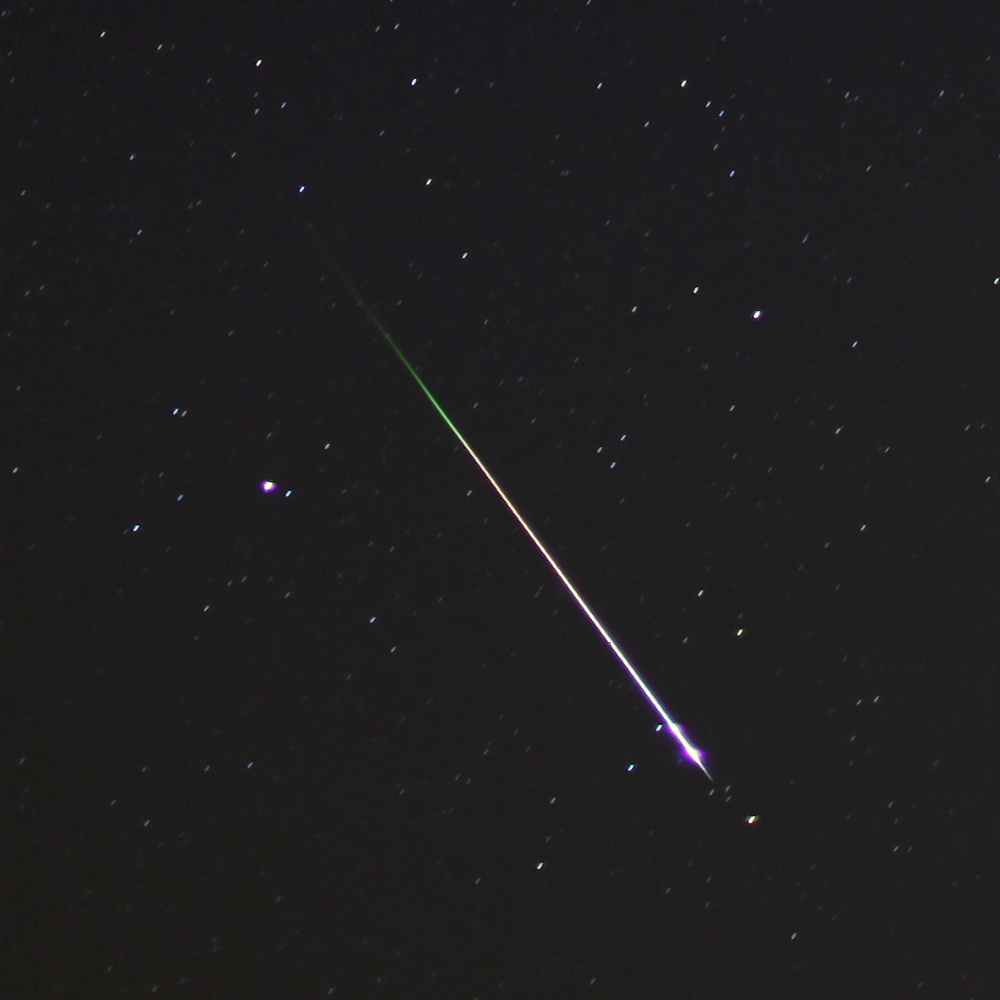Leonid Meteor Shower Webcast: Watch Live Here Tonight

UPDATE: See amazing photos of the 2012 Leonid meteor shower here: Leonid Meteor Shower of 2012: Photos
The annual Leonid meteor shower may create some striking flashes overnight tonight (Nov. 16) and early Tuesday (Nov. 20), and you can watch the celestial fireworks show live via a NASA webcast. While the meteor shower reached its peak on Saturday, Nov. 17, the Earth is passing through another lane of debris from the parent comet of the shooting star display.
Leonid Meteor Shower May Flare Up Early Tuesday
Scientists at NASA's Marshall Space Flight Center in Huntsville, Ala., will provide a live views of the Leonid meteor shower from an all-sky camera. The webcast is embedded below:
You can also watch the Ustream feed directly from NASA here: http://www.nasa.gov/topics/solarsystem/features/watchtheskies/leonids_2012.html
The meteor shower will be at its best before dawn on Saturday, at about 3 a.m. EST (0800 GMT), scientists say.
The Leonid meteor shower is created by dusty debris from the comet Tempel-Tuttle, which orbits the sun once every 33 years. Each November, the Earth plows through the comet's debris stream to create amazing meteor displays.
Breaking space news, the latest updates on rocket launches, skywatching events and more!
Top 10 Leonid Meteor Shower Facts
This year, NASA scientists predict the Leonids may be seen at a rate of 20 to 30 meteors per hour over the Americas, weather permitting. It is vital to pick an observing spot far from city lights to obtain the best views.
Leonid Meteor Shower of 2012: Observing Tips
Editor's note: If you and snap an amazing photo of the Leonid meteor shower and would like to share it with SPACE.com for a possible story or image gallery, send images, comments and location information to managing editor Tariq Malik at tmalik@space.com.
Follow SPACE.com on Twitter @Spacedotcom. We're also on Facebook & Google+.

Space.com is the premier source of space exploration, innovation and astronomy news, chronicling (and celebrating) humanity's ongoing expansion across the final frontier. Originally founded in 1999, Space.com is, and always has been, the passion of writers and editors who are space fans and also trained journalists. Our current news team consists of Editor-in-Chief Tariq Malik; Editor Hanneke Weitering, Senior Space Writer Mike Wall; Senior Writer Meghan Bartels; Senior Writer Chelsea Gohd, Senior Writer Tereza Pultarova and Staff Writer Alexander Cox, focusing on e-commerce. Senior Producer Steve Spaleta oversees our space videos, with Diana Whitcroft as our Social Media Editor.
